Abstract
A phage typing system was used to evaluate the composition of indigenous populations of Rhizobium meliloti inhabiting nodules of Medicago sativa cultivars grown with and without inoculation at two field sites during 1983 and 1984. Soil at both locations contained established populations of R. meliloti at planting. Analysis of 1,920 nodule isolates revealed 55 unique phage types of indigenous R. meliloti at one site and 65 indigenous types at the other location. The distributions of phage types differed markedly between locations. At one site, the nodule population was dominated by two phage types; seven others occurred consistently but at lower frequency, and the remainder were encountered infrequently. No indigenous types predominated at the other location, although nine occurred more frequently than the remaining types. Indigenous R. meliloti predominated in nodules from inoculated plots at both sites, with inoculant recovery varying between 10 and 38% in each of two years. The frequency of occurrence of particular phage types at one location was significantly influenced by both M. sativa cultivar and inoculation. At this location, the interaction of cultivar and inoculation on the incidence of phage types suggests that the presence of an inoculant strain differentially affected nodule occupancy of M. sativa cultivars by members of the indigenous R. meliloti population. At both sites, the frequency of specific phage types differed between years. The data emphasize the importance of understanding the ecology and characteristics of indigenous Rhizobium populations as a prerequisite for elucidating problems of inoculant establishment and persistence in competitive situations.
Full text
PDF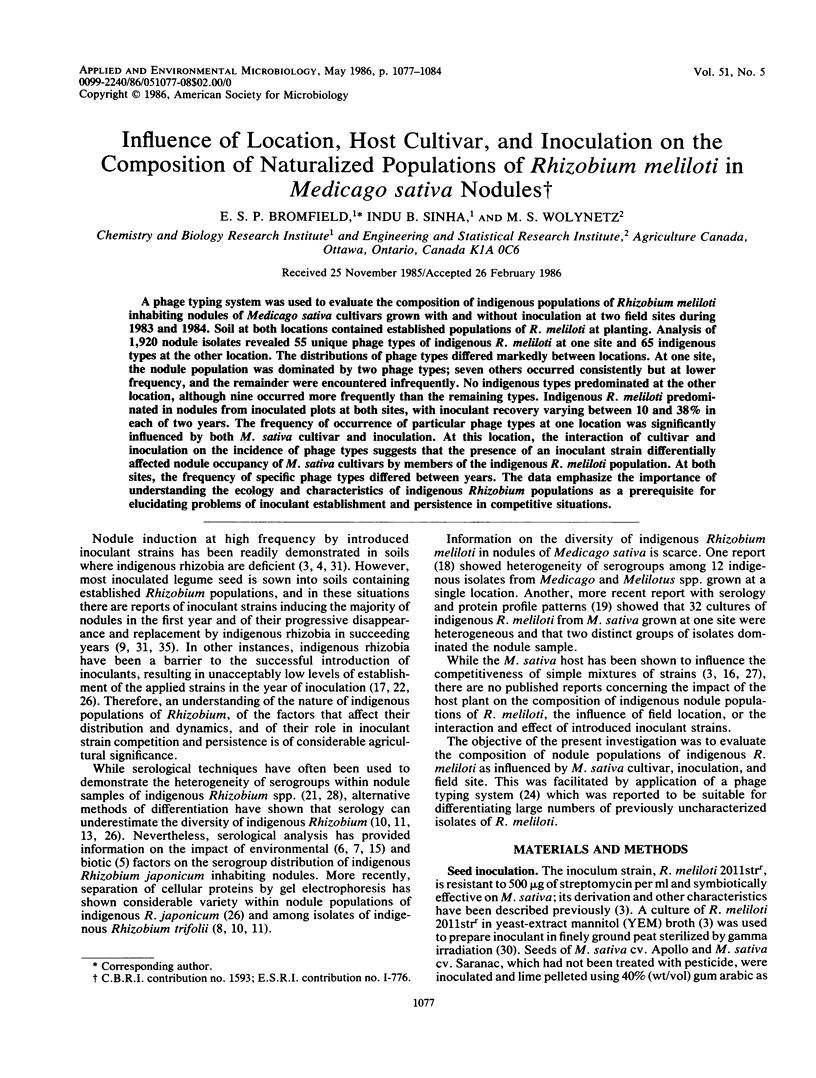
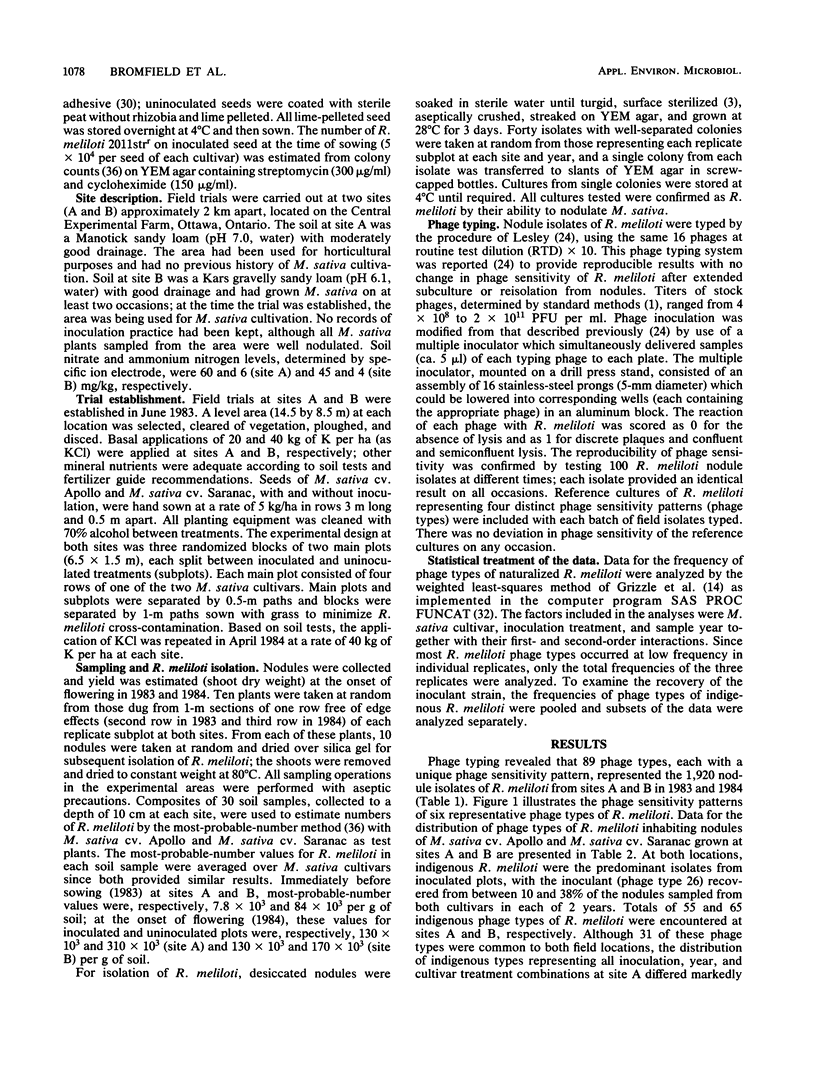
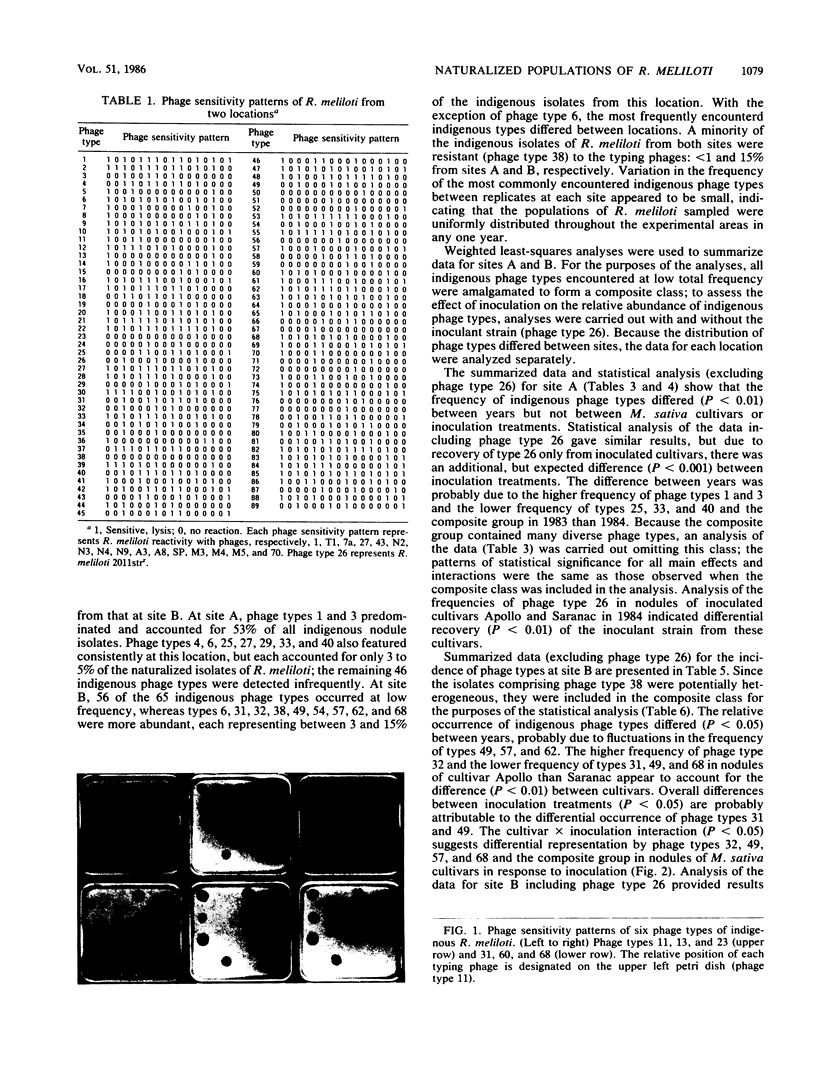

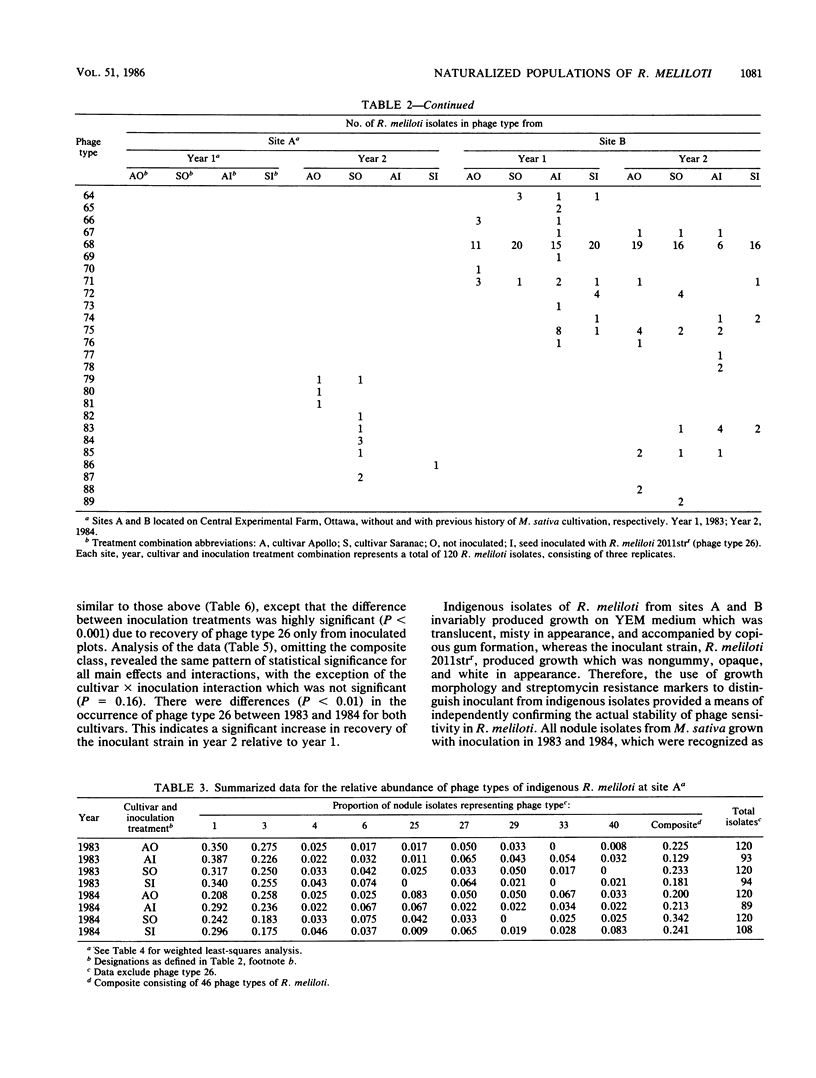
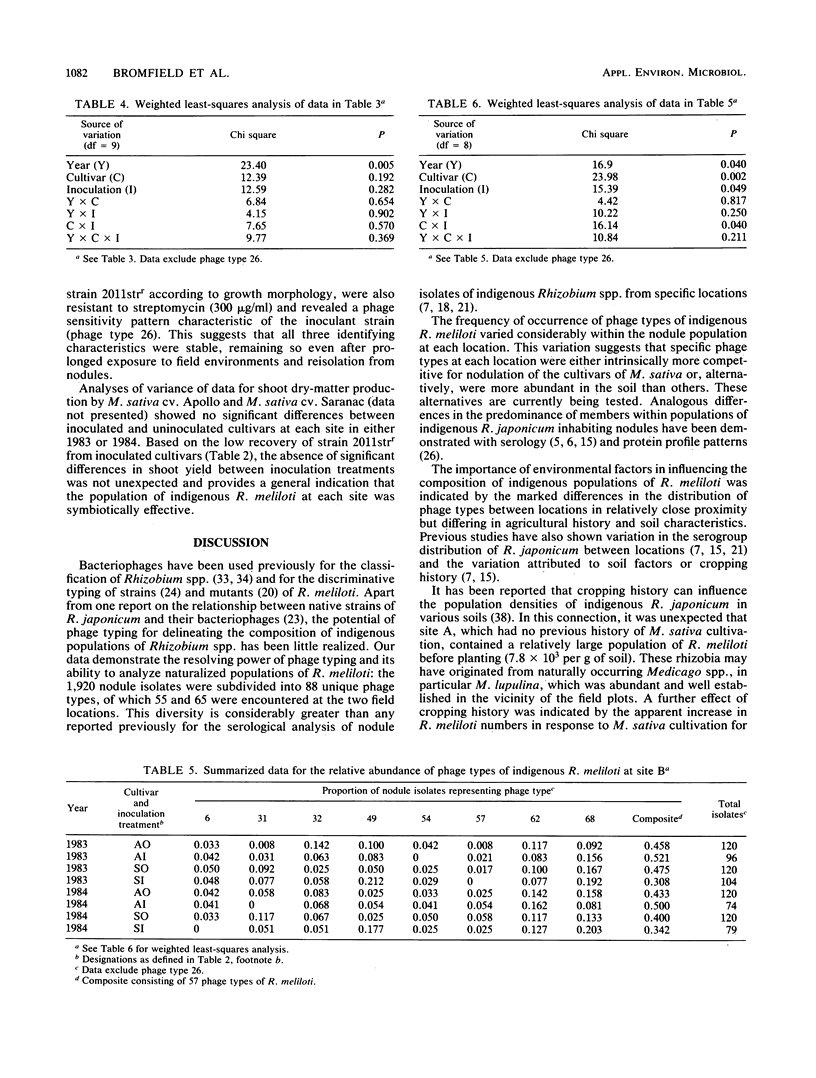
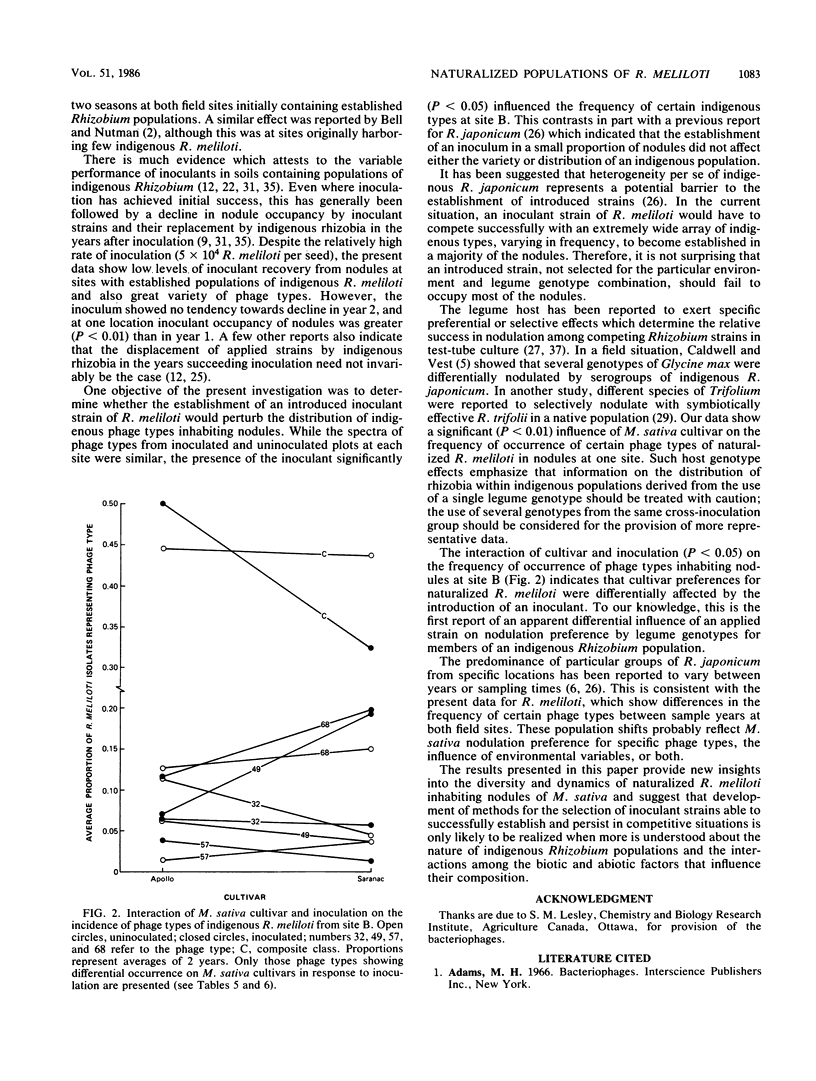

Images in this article
Selected References
These references are in PubMed. This may not be the complete list of references from this article.
- Bromfield E. S. Variation in Preference for Rhizobium meliloti Within and Between Medicago sativa Cultivars Grown in Soil. Appl Environ Microbiol. 1984 Dec;48(6):1231–1236. doi: 10.1128/aem.48.6.1231-1236.1984. [DOI] [PMC free article] [PubMed] [Google Scholar]
- Grizzle J. E., Starmer C. F., Koch G. G. Analysis of categorical data by linear models. Biometrics. 1969 Sep;25(3):489–504. [PubMed] [Google Scholar]
- Johansen E., Finan T. M., Gefter M. L., Signer E. R. Monoclonal antibodies to Rhizobium meliloti and surface mutants insensitive to them. J Bacteriol. 1984 Oct;160(1):454–457. doi: 10.1128/jb.160.1.454-457.1984. [DOI] [PMC free article] [PubMed] [Google Scholar]
- Noel K. D., Brill W. J. Diversity and Dynamics of Indigenous Rhizobium japonicum Populations. Appl Environ Microbiol. 1980 Nov;40(5):931–938. doi: 10.1128/aem.40.5.931-938.1980. [DOI] [PMC free article] [PubMed] [Google Scholar]
- Staniewski R. Relationship among different Rhizobium strains determined by phage lysis. Acta Microbiol Pol B. 1970;2(1):3–12. [PubMed] [Google Scholar]
- Staniewski R. Typing of Rhizobium by phages. Can J Microbiol. 1970 Oct;16(10):1003–1009. doi: 10.1139/m70-170. [DOI] [PubMed] [Google Scholar]
- VINCENT J. M., WATERS L. M. The influence of the host on competition amongst clover root-nodule bacteria. J Gen Microbiol. 1953 Dec;9(3):357–370. doi: 10.1099/00221287-9-3-357. [DOI] [PubMed] [Google Scholar]
- van Rensburg H. J., Strijdom B. W. Competitive Abilities of Rhizobium meliloti Strains Considered to Have Potential as Inoculants. Appl Environ Microbiol. 1982 Jul;44(1):98–106. doi: 10.1128/aem.44.1.98-106.1982. [DOI] [PMC free article] [PubMed] [Google Scholar]



